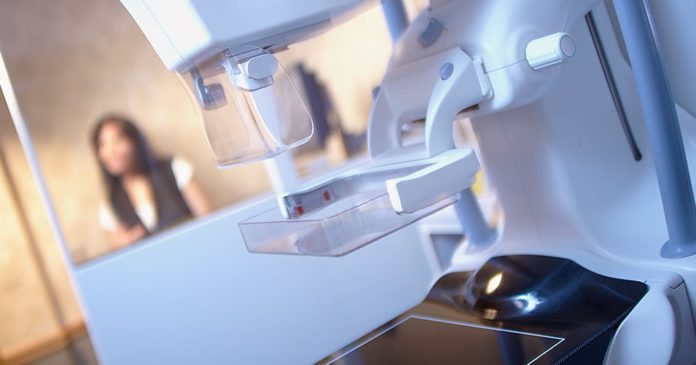
Mammography is still the best way to screen for breast cancer, according to an international group of cancer experts. After reviewing the benefits and harms of various breast cancer screening methods, a working group convened by the International Agency for Research on Cancer (IARC) concluded that there is a net benefit to recommending routine mammographic screening in women over the age of 50. The conclusion confirms IARC’s previous position, which was issued in 2002.
While the evidence that screening reduces mortality is sufficient for women ages 50 to 69 and 70 to 74, it is limited for women ages 40 to 44 and 45 to 49, the group said, a finding that is sure to reignite the contentious debate on how early to screen. The group also found sufficient evidence that screening results in overdiagnosis.
Writing in a Special Report published in the The New England Journal of Medicine, researchers from 16 countries weighed the cancer-preventive benefits against the adverse effects of different screening methods, including mammography, clinical/self breast examination, ultrasound, and magnetic resonance imaging (MRI).
The resulting update of the IARC’s 2002 breast-cancer screening handbook is timely for several reasons, according to the authors, led by Dr. Beatrice Lauby-Secretan, PhD, an IARC researcher. “Recent improvements in treatment outcomes for late-stage breast cancer and concerns regarding overdiagnosis call for reconsideration,” they wrote.
Also needing reassessment are the age groups that need screening, the appropriate frequency, the effectiveness of clinical and self breast examination, and non-mammographic imaging techniques not evaluated in the 2002 IARC Handbook. Furthermore, the screening of women at high risk for breast cancer who may be particularly sensitive to ionizing radiation from mammography requires reevaluation in light of alternative screening methods such as MRI, PET, and ultrasound, Lauby-Secretan and colleagues noted.
Recognizing that the relevance of studies conducted more than 20 years ago needed reconsideration given recent improvements in breast imaging and treatment, the researchers met in November 2014 to rigorously assess and debate the scientific literature to date. For a range of screening approaches, the evidence from about 20 robust observational cohort and 20 case-control studies was categorized as sufficient, limited, or inadequate.
Among their key findings:
- For women ages 50 to 69, routine mammography screening is associated with a 40% lower risk of dying from breast cancer.
- Women ages 70 to 74 who attend screening also have a substantial risk reduction in several incidence-based cohort mortality studies.
- For women ages 40 to 44 or 45 to 49, the evidence is limited and does not allow for establishing the most appropriate screening guidelines.
- For women ages 50 to 70 who undergo bi-annual mammograms, the cumulative risk of false positive results (i.e., those that indicate cancer when in fact, there is no cancer present) is about 20%, with less than 5% resulting in invasive procedures. Having a false-positive mammogram can cause short-term negative psychological consequences.
- Estimates of overdiagnosis vary: the Euroscreen Working Group’s estimate is 6.5%, while others have put it at 4% to 11% or higher.
- The cumulative risk of radiation-induced breast cancer from screening is estimated to be one to 10 per 100,000 women, depending on age and the frequency and duration of screening — a rate about 100 times less than estimates of deaths prevented by screening.
- While some alternative methods of screening, like digital breast tomosynthesis, can improve tumor detection rates, the evidence that they reduce breast cancer mortality is insufficient.
- Similarly, there is inadequate evidence that breast self-examination reduces mortality.
- The evidence for adding MRI to mammography in screening high-risk women is also inadequate, including for the reduction of mortality in women with mutated BRCA1/2.
Overall, what they found largely confirmed what experts have long said: For women ages 50 to 75, routine mammograms reduce the risk of dying from breast cancer, but for women in their 40s there is limited evidence of such a benefit. And although a number of emerging technologies show promise, “the evidence regarding other screening techniques was too sparse to allow any conclusions,” the group wrote.
